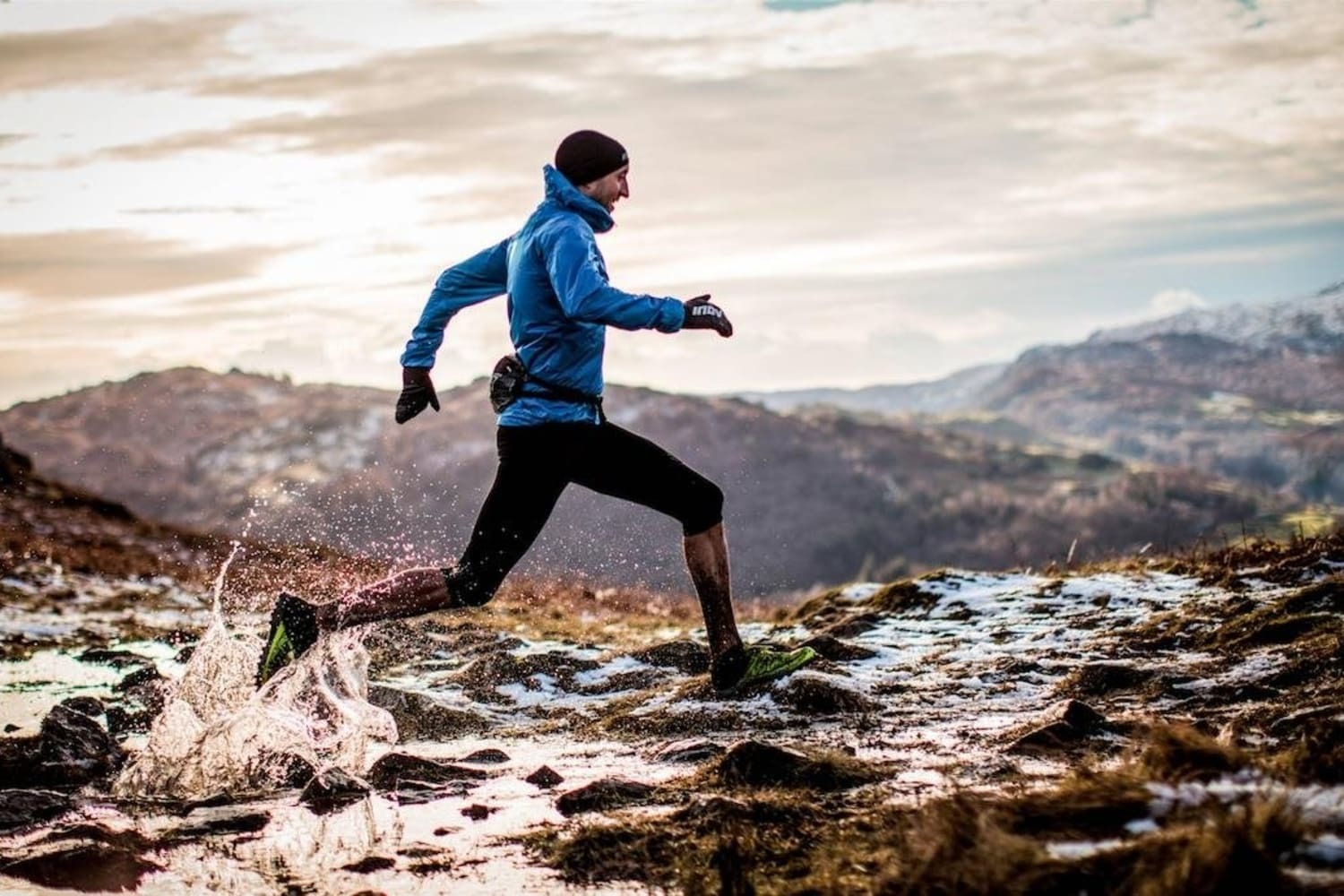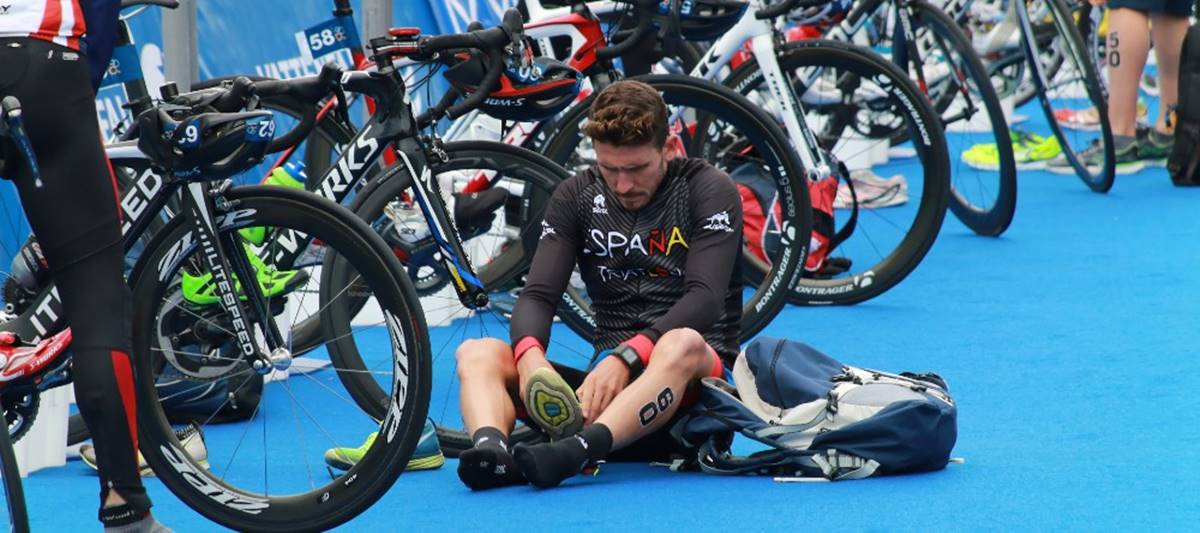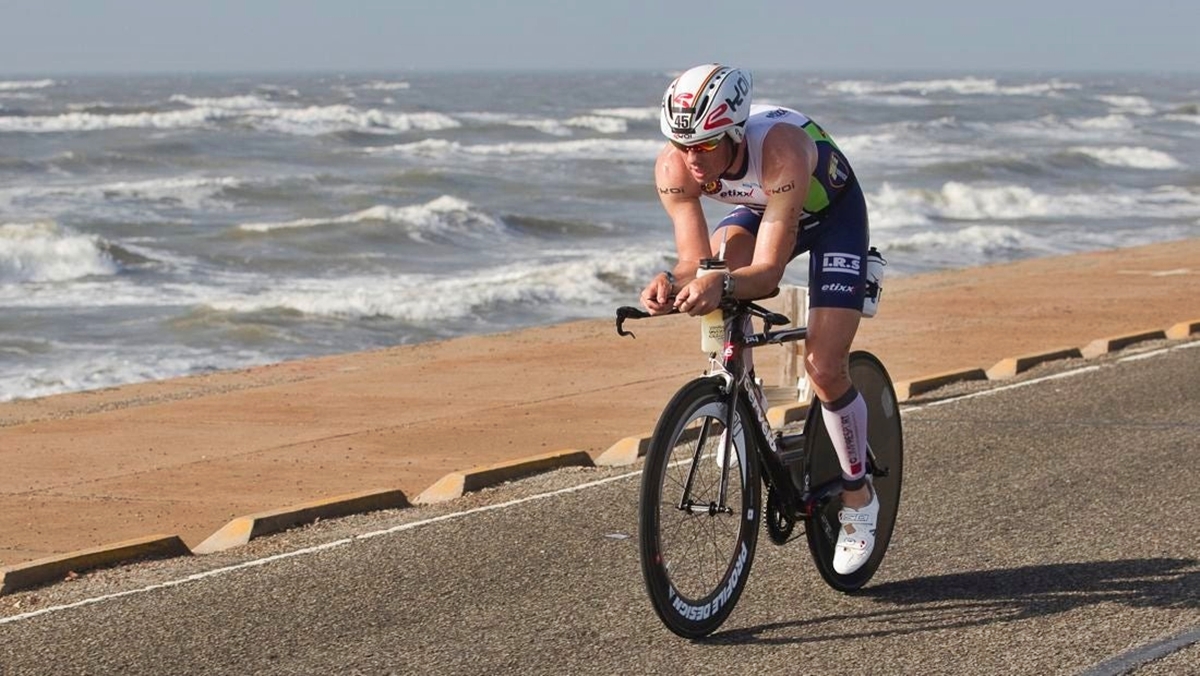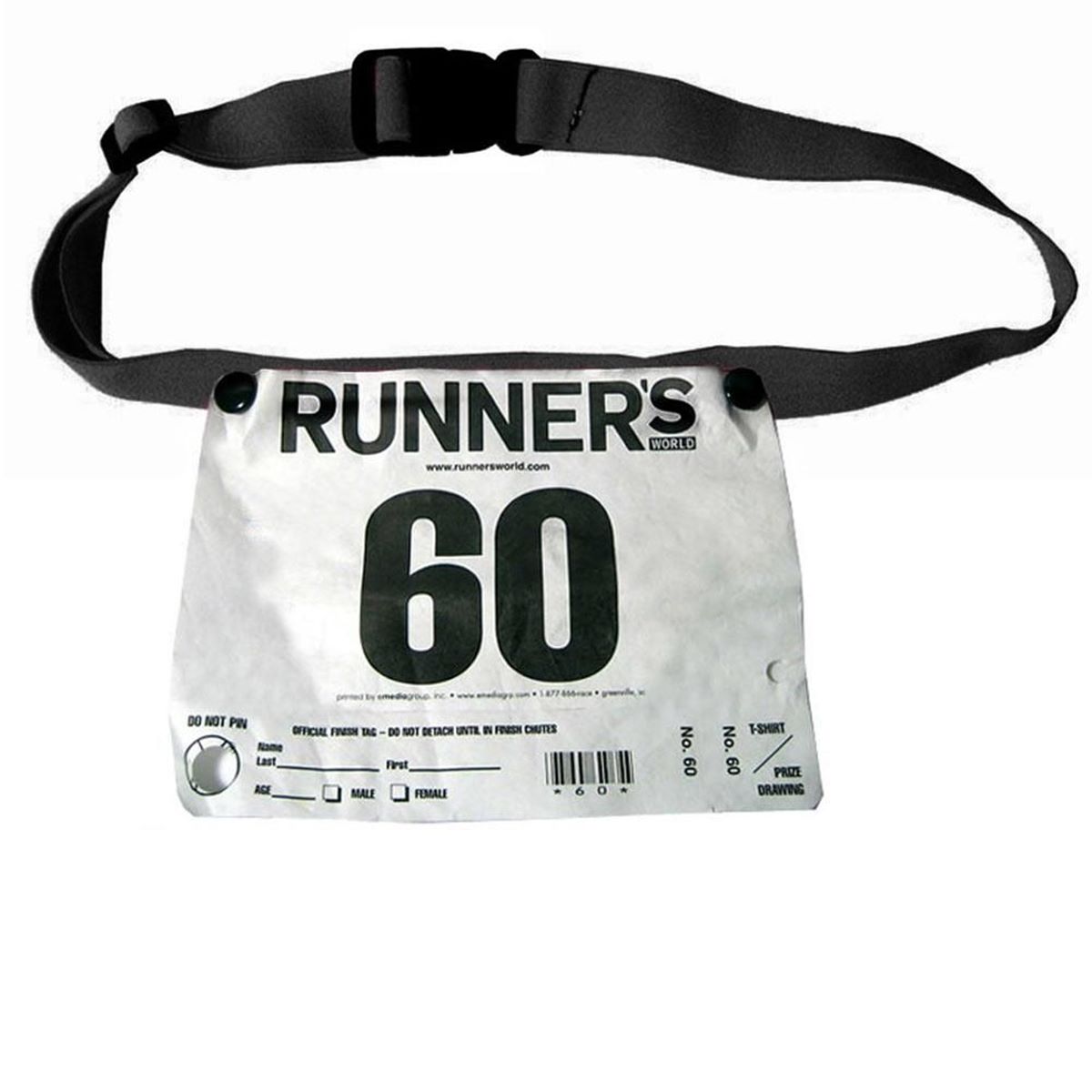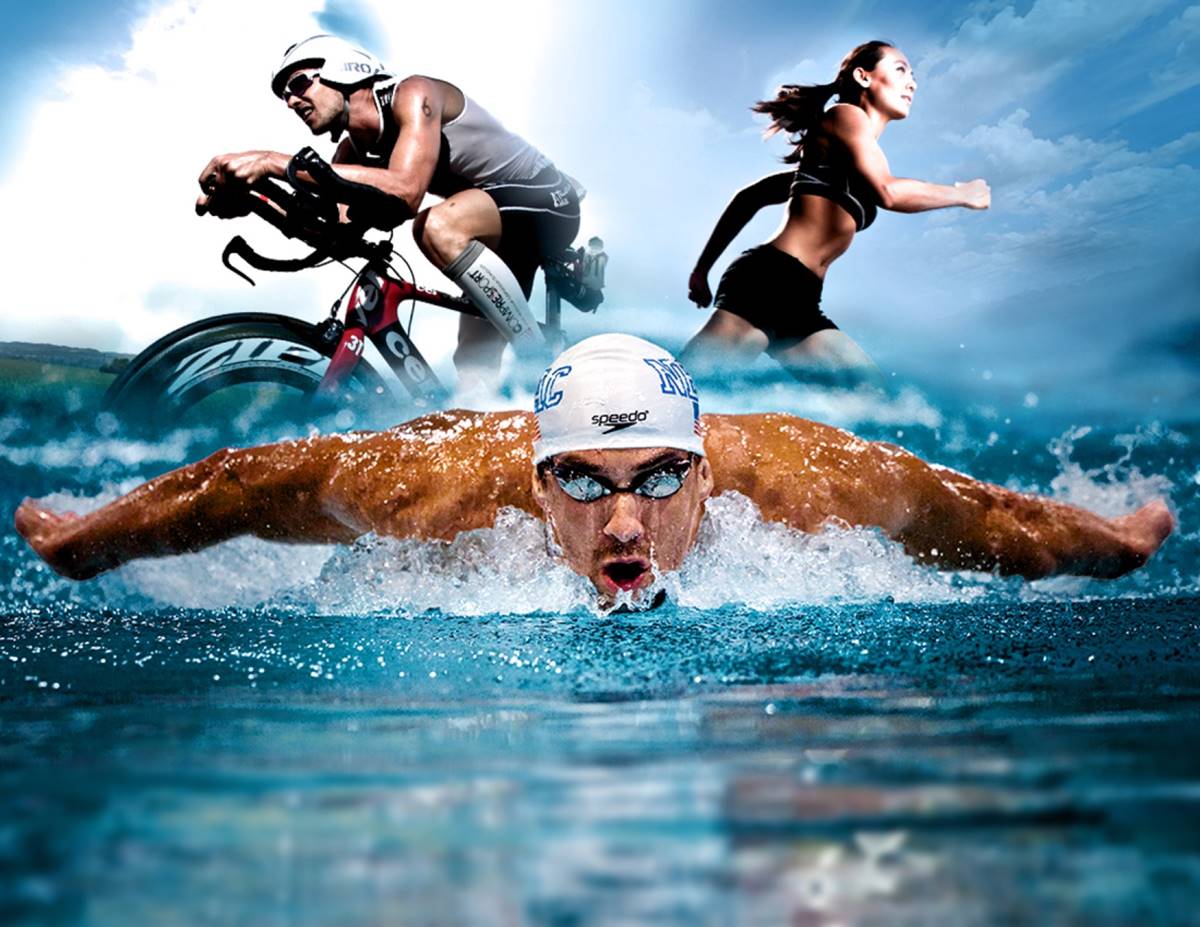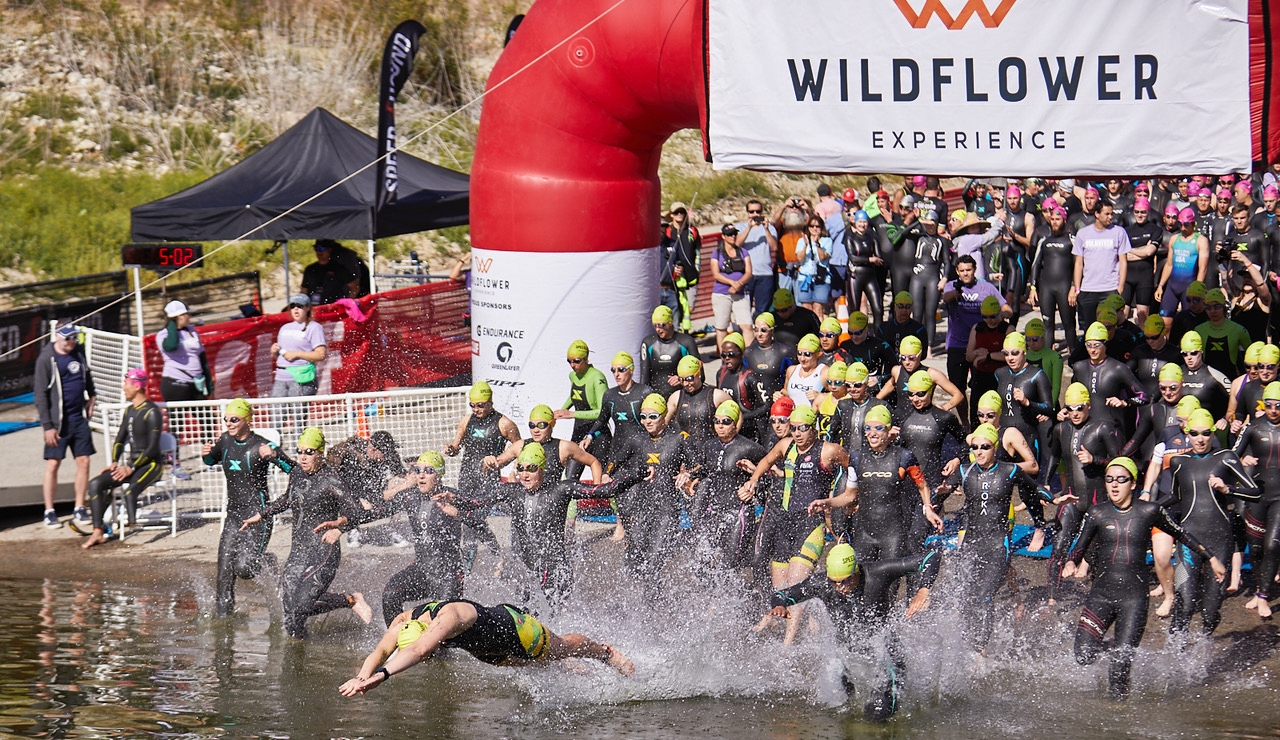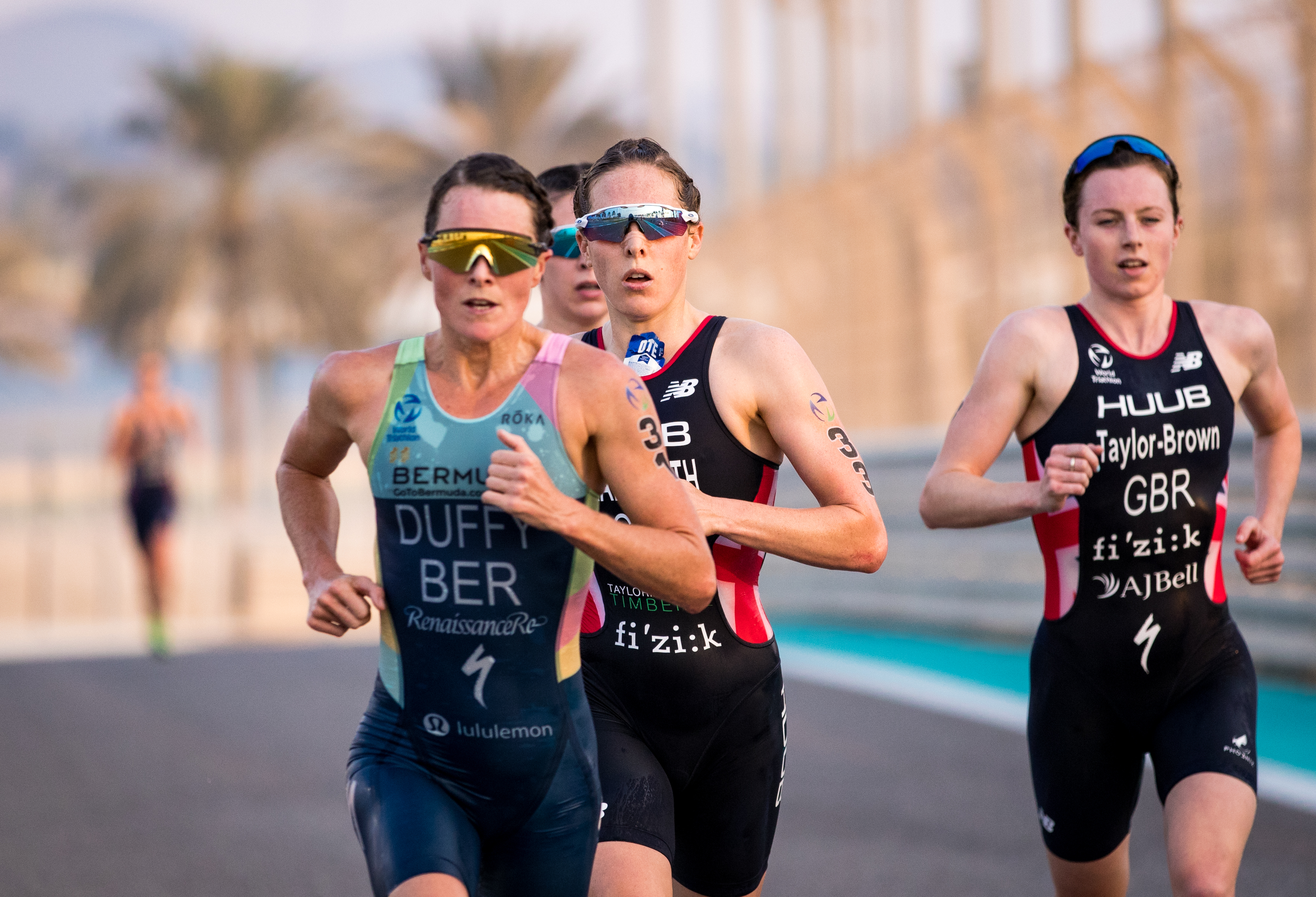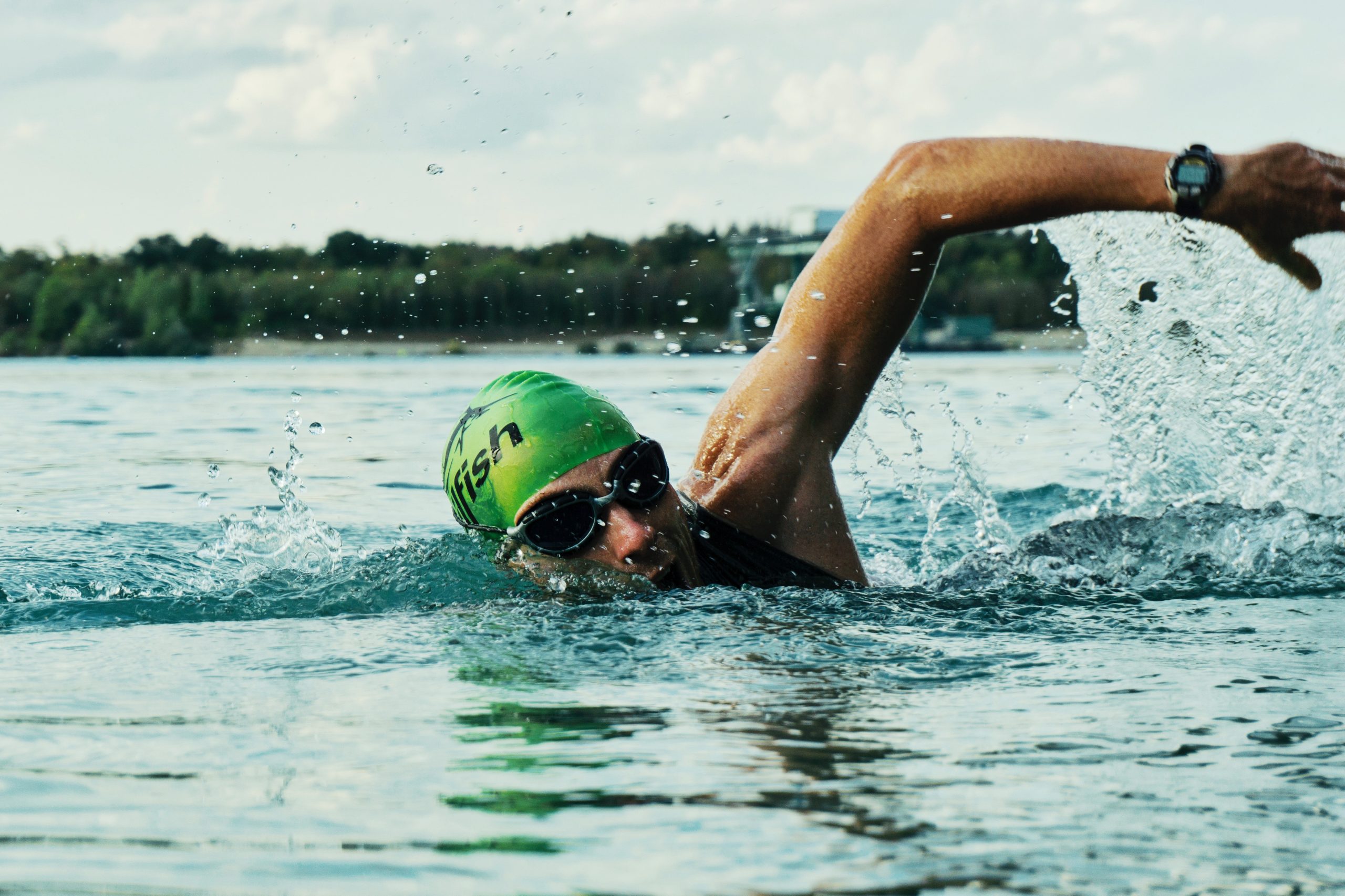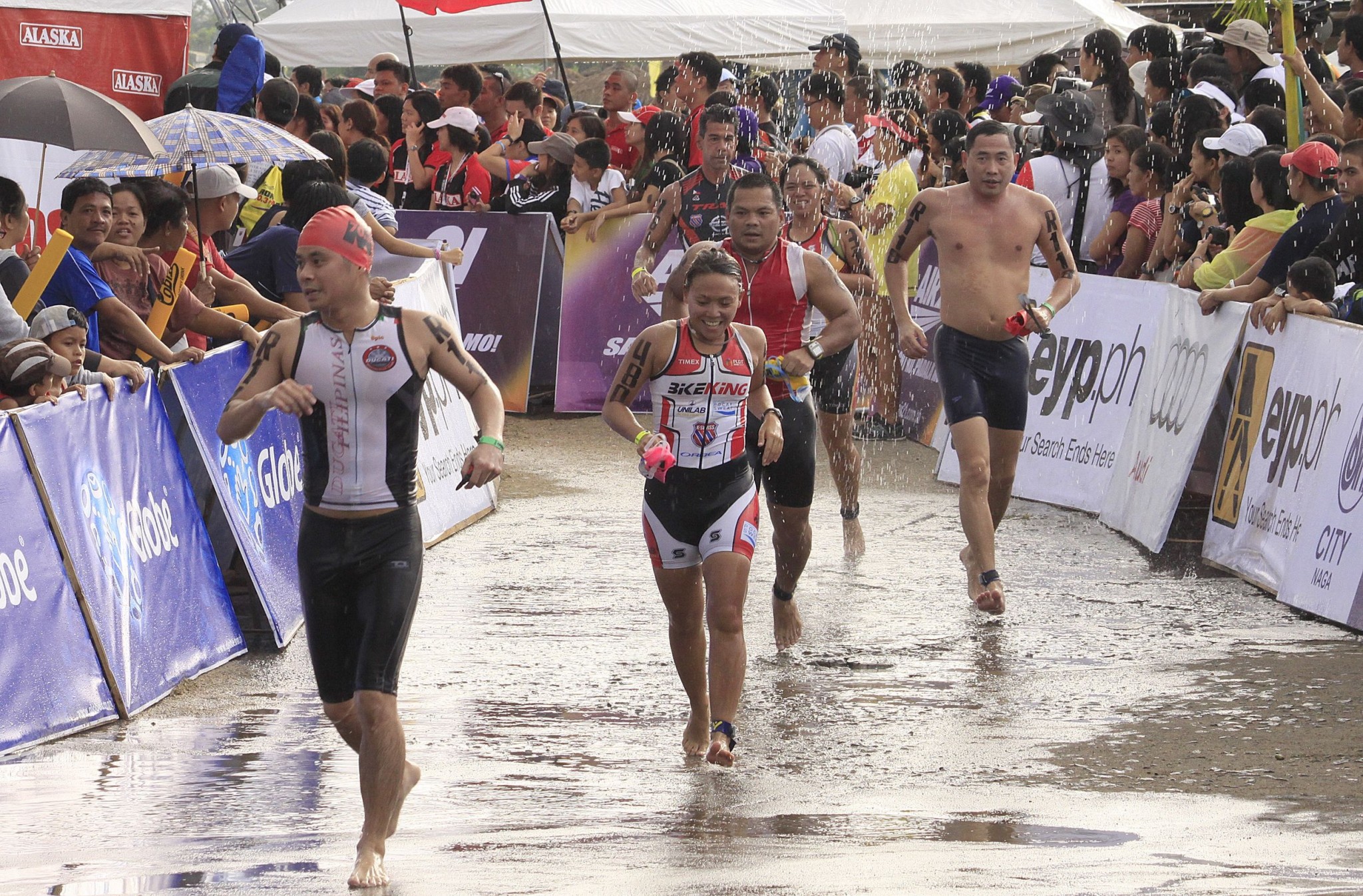

Featured
How To Dress For A Rainy Triathlon
Modified: September 1, 2024
Discover the perfect outfit for your next rainy triathlon with our featured guide. Stay dry and comfortable while conquering the elements.
Introduction
Triathlons are already challenging enough, but add rain into the mix and it can make for an even more grueling experience. However, with the right mindset and preparation, you can conquer a rainy triathlon and come out stronger on the other side. The key to success lies in your choice of clothing and gear, as well as understanding how to adapt your race strategy to the wet conditions.
When it comes to dressing for a rainy triathlon, the goal is to find the perfect balance between staying dry and comfortable while still being able to perform at your best. The last thing you want is to be weighed down by drenched clothing or suffer from blisters caused by wet shoes. This article will provide you with essential tips and guidelines on how to dress for a rainy triathlon, ensuring that you are well-prepared to face the challenges that lie ahead.
Before we dive into the specifics, it’s important to understand that the clothing and gear you choose can make a significant difference in your overall performance. Not only will they protect you from the rain, but they will also help to regulate your body temperature and prevent discomfort or injury.
In the following sections, we will discuss the essential clothing items for a rainy triathlon, explore the various options for waterproof gear, provide tips on choosing the right shoes, and offer useful strategies for staying warm and dry during the race. Additionally, we will discuss how to prepare your transition area for rain and share strategies for staying safe in wet conditions.
Now, let’s get started on our journey to discover how to dress for and conquer a rainy triathlon!
Essential Clothing Items for a Rainy Triathlon
When it comes to a rainy triathlon, choosing the right clothing is crucial for comfort, performance, and safety. Here are the essential clothing items you should consider for a wet race:
1. Triathlon Wetsuit: A wetsuit is a must-have for a rainy triathlon as it provides insulation, buoyancy, and protection from the elements. Look for a wetsuit that is specifically designed for triathlons and offers water resistance properties.
2. Triathlon Shorts/Tri Suit: Opt for triathlon shorts or a tri suit that are water repellent and quick-drying. These garments will reduce drag in the water and provide comfort and flexibility during the bike and run segments.
3. Waterproof Jacket: A lightweight, waterproof jacket is essential to keep you dry during the race. Look for a jacket with breathable fabric that allows sweat to escape while keeping rain out.
4. Base Layers: Moisture-wicking base layers are essential to keep you dry and regulate your body temperature. Look for materials like merino wool or synthetic fabrics that will keep you warm even when wet.
5. Compression Socks: Compression socks can provide additional support and help prevent blisters, even in wet conditions. Look for moisture-wicking, quick-drying socks with a tight fit that will stay in place throughout the race.
6. Gloves: Waterproof gloves are a great addition to your rainy triathlon gear, providing warmth and protection for your hands. Opt for gloves with a good grip that won’t impair your ability to handle your bike or perform other tasks.
7. Hat or Visor: A hat or visor can help keep rain out of your eyes and shield your face from the elements. Look for a lightweight, water-resistant option that fits comfortably under your helmet.
8. Extra Clothing for Transition: Consider packing extra dry clothing for after the swim to change into during transition. This will help you start the bike segment feeling warm and comfortable.
Remember, the key is to choose clothing that is functional, comfortable, and specifically designed for triathlons. Avoid cotton materials as they can become heavy and uncomfortable when wet. Additionally, don’t forget to test your gear before race day to ensure the right fit and functionality.
Now that you know the essential clothing items for a rainy triathlon, it’s time to explore the options for waterproof gear and how to choose the right shoes for a wet race.
Waterproof Gear Options
When facing a rainy triathlon, having waterproof gear can make a world of difference in your performance and comfort. Here are some essential waterproof gear options to consider for your race:
1. Waterproof Cycling Jacket: A waterproof cycling jacket is a crucial piece of gear to keep you dry during the bike segment. Look for a jacket that is breathable, lightweight, and has a snug fit to minimize wind resistance.
2. Waterproof Swim Cap: While a swim cap won’t keep your entire body dry, it can help minimize heat loss and keep your head more insulated in the water. Look for a silicone swim cap that provides a tight seal against water entry.
3. Waterproof Backpack or Transition Bag: Invest in a waterproof backpack or transition bag to store your dry clothes and other essentials during the race. This will ensure that your belongings stay dry while you transition between segments.
4. Waterproof Phone Case: To keep your phone protected from rain and potential water damage, consider using a waterproof phone case. Look for a case that offers full functionality without impeding your ability to use the device.
5. Waterproof Socks: Wet feet can lead to discomfort, blisters, and decreased performance. Waterproof socks can provide an extra layer of protection from moisture, ensuring your feet stay dry and comfortable throughout the race.
6. Waterproof Cycling Shoe Covers: Keeping your feet dry on the bike is essential, and waterproof cycling shoe covers can help achieve that. These covers fit over your cycling shoes, providing a barrier against rain and splashes.
7. Waterproof Watch: If you rely on a watch for timing and data tracking, consider investing in a waterproof watch. This will allow you to track your performance even in wet conditions without worrying about water damage.
When selecting waterproof gear, it’s important to ensure that the items are not only waterproof but also breathable. This will help prevent overheating and allow sweat to escape, keeping you comfortable throughout the race.
Remember to test your waterproof gear before the race to ensure that it fits properly and functions as expected. A well-prepared gear arsenal will contribute to a more enjoyable and successful rainy triathlon experience.
Now that you’re equipped with knowledge about essential clothing items and waterproof gear options, let’s move on to choosing the right shoes for a rainy triathlon.
Choosing the Right Shoes for a Rainy Triathlon
The right shoes are crucial for a successful rainy triathlon as they provide traction, support, and protection while navigating wet and slippery conditions. Here are some considerations when choosing the right shoes for a rainy race:
1. Water Resistance: Look for shoes that are specifically designed to be water-resistant or have a waterproof membrane. These shoes will help keep your feet dry and comfortable throughout the race.
2. Traction: Opt for shoes with a good grip and traction pattern on the outsole. This will allow you to maintain stability and reduce the risk of slipping on wet surfaces, whether on the road or in transition areas.
3. Quick Drying: Shoes that can dry quickly after getting wet are ideal. Look for materials that are moisture-wicking and have drain holes for effective water evacuation. This will help prevent blisters and discomfort during the race.
4. Lightweight and Flexible: Choose shoes that are lightweight and flexible to provide freedom of movement. This will allow you to maintain your natural running stride and perform at your best, even in wet conditions.
5. Proper Fit: It’s essential to find shoes that fit properly, especially when it comes to rainy triathlons. Consider that your feet may swell slightly due to moisture, so opt for a slightly larger size or wider width if necessary. Test the shoes with wet feet to ensure they don’t cause any discomfort or rubbing.
6. Practice in Wet Conditions: Before race day, try running or training in wet conditions to ensure that your chosen shoes perform well. This will give you confidence in their grip and performance, allowing you to focus on the race rather than worrying about your footwear.
Remember that every runner has different preferences and needs, so it’s important to experiment and find the shoes that work best for you in rainy conditions. Don’t be afraid to seek advice from experienced triathletes or consult with running specialists to get personalized recommendations.
Now that you have a good understanding of how to choose the right shoes for a rainy triathlon, let’s move on to the next section, which covers tips for staying warm and dry during the race.
Tips for Staying Warm and Dry During the Race
When participating in a rainy triathlon, staying warm and dry is not only important for your comfort but also essential for maintaining your performance. Here are some valuable tips to help you stay warm and dry during the race:
1. Layer properly: Wear moisture-wicking base layers under your triathlon suit or shorts to keep your body dry and retain heat. Layering allows you to adjust your clothing according to the temperature and rain intensity throughout the race.
2. Choose the right fabrics: Opt for synthetic materials or merino wool that can wick away moisture and keep you warm even when wet. Avoid cotton as it absorbs water and retains moisture, leading to discomfort and decreased insulation.
3. Wear a waterproof jacket: Invest in a lightweight and breathable waterproof jacket to protect yourself from rain and wind. Look for one with adjustable features like a hood and cuffs to ensure a snug fit that keeps water out.
4. Consider arm warmers and leg warmers: Arm and leg warmers made from thermal or water-resistant materials can provide additional warmth and protection against the elements. They are easy to remove if temperatures rise or rain subsides.
5. Use shoe covers: Waterproof shoe covers or rubberized socks can help keep your feet dry and warm during the bike and run segments. Make sure they fit securely and don’t hinder your movement or affect your performance.
6. Apply chafing prevention products: Rain and wet conditions can increase the risk of chafing. Apply a lubricant or anti-chafing product to areas prone to friction, such as underarms, inner thighs, and feet, to prevent discomfort and potential skin irritation.
7. Stay hydrated and fuel properly: Even in rainy conditions, it’s crucial to stay hydrated and properly fueled throughout the race. Carry a small water bottle or hydration pack and consume energy gels or snacks as needed.
8. Dry off during transitions: Use a small towel to dry off as best as you can during transitions. This will help remove excess moisture and prevent chafing and discomfort as you continue with the race.
9. Stay mentally focused: Racing in the rain can be mentally challenging, but staying focused and positive can make a significant difference. Embrace the elements, visualize your success, and maintain a strong mindset to overcome any obstacles.
By implementing these tips, you will increase your chances of staying warm, dry, and comfortable during a rainy triathlon. Remember, it’s essential to test your gear and practice in wet conditions before the race to ensure that you’re well-prepared for the challenges that lay ahead.
Now, let’s explore how to prepare your transition area for rain to ensure a smooth race experience.
Preparing Your Transition Area for Rain
When participating in a rainy triathlon, it’s crucial to prepare your transition area to ensure a smooth and efficient race experience. Here are some tips to help you get your transition area ready for the rain:
1. Waterproof your gear: Place all your gear, including extra clothes, socks, and nutrition, in waterproof bags or containers. This will protect them from rain and prevent them from getting wet before or during the race.
2. Use a waterproof transition mat: Lay down a waterproof mat in your transition area to create a dry surface. This will help prevent your items from sitting directly on wet ground and minimize the risk of them getting soaked.
3. Setup your gear strategically: Arrange your gear in a way that makes it easy to access and prevents it from being exposed to rain. Place shoes upside down or cover them with plastic bags to keep them dry before you put them on.
4. Consider a poncho or umbrella: To shield yourself from rain when transitioning, consider bringing a small poncho or portable umbrella. This can provide temporary cover and keep you relatively dry as you move between segments.
5. Bring a towel: Have a towel handy in your transition area to dry off your feet and wipe down any additional moisture before putting on your shoes or bike helmet. This will help prevent discomfort and slipping during the race.
6. Prepare for mud: If the race course is likely to be muddy, bring an old towel or carpet square to clean your shoes before you put them on. This will help remove any excess mud or debris that could affect your performance.
7. Familiarize yourself with the layout: Take note of where your bike and other important equipment are located in your transition area. Being familiar with your setup will help you navigate quickly and efficiently, even in wet and potentially chaotic conditions.
8. Stay organized: Maintain a clear and organized transition area to avoid confusion and reduce the risk of losing or misplacing your gear. Use separate bags or compartments for different items to make it easier to locate them when you need them.
Remember to arrive at the race early to allow ample time for setting up your transition area and addressing any unexpected challenges. Also, keep in mind that certain events may have specific rules or guidelines regarding transition area preparations, so familiarize yourself with these beforehand.
By implementing these tips, you will be well-prepared to handle a rainy triathlon and have a more efficient and stress-free race. Now, let’s move on to the next section, which focuses on strategies for staying safe in wet conditions.
Strategies for Staying Safe in Wet Conditions
Racing in wet conditions can pose additional challenges and safety concerns. To ensure a safe and enjoyable experience, here are some strategies for staying safe in rainy triathlon conditions:
1. Slow down and adjust your pace: Wet conditions can make surfaces slippery, so it’s important to adjust your pace and be cautious. Slow down during turns and descents to maintain control and reduce the risk of slipping or falling.
2. Keep a safe distance: Leave more space between you and other participants to account for any sudden movements or slips. This will give you extra time to react and avoid collisions.
3. Be mindful of paint and road markings: Painted surfaces and road markings can become extremely slick in the rain. Stay aware of their locations and be cautious when crossing them to minimize the risk of slipping.
4. Maintain visibility: Ensure that you are easily visible to other participants and race officials. Wear brightly colored or reflective clothing, especially in low-light conditions, and consider using a waterproof reflective vest or armbands.
5. Watch out for puddles and standing water: Puddles and standing water on the race course can be deceivingly deep or hide potential hazards. Keep an eye out for them and try to navigate around them if possible.
6. Take extra care in transitions: Transition areas can become particularly slippery and crowded during rainy races. Slow down, be careful when running on wet surfaces, and watch out for any tripping hazards.
7. Use caution on wet surfaces: Be mindful of wet surfaces, such as metal grates, cobblestones, or wooden bridges, as they can become slippery. Step carefully and with caution when encountering these areas.
8. Listen to your body: If you feel uncomfortable or notice any signs of fatigue, consider adjusting your race strategy. Don’t push yourself beyond your limits, as wet conditions can increase the risk of injury.
9. Stay hydrated and fueled: Even in rainy conditions, it’s important to stay properly hydrated and fueled. Drink water and consume energy gels or snacks at regular intervals to maintain your energy levels and prevent dehydration.
10. Be prepared to adapt: Weather conditions can change rapidly during a race, so be prepared to adapt your race plan accordingly. Listen to the instructions from race officials and adjust your pace and strategy as necessary.
Remember, your safety is paramount during a rainy triathlon. Don’t hesitate to seek assistance or notify race officials if you encounter any unsafe conditions or potential hazards along the race course.
Now that you have a good understanding of strategies for staying safe in wet conditions, it’s time to wrap up with the concluding section.
Conclusion
Participating in a rainy triathlon can be a challenging and exhilarating experience. The key to success lies in your preparation, mindset, and the choices you make regarding your clothing, gear, and race strategy. By following the tips and guidelines provided in this article, you can conquer a rainy triathlon and come out stronger on the other side.
When it comes to dressing for a rainy triathlon, it is essential to choose clothing that is both comfortable and functional. From a triathlon wetsuit to waterproof jackets, compression socks, and gloves, each piece plays a vital role in keeping you dry, warm, and performing at your best.
Equally important is investing in high-quality, waterproof gear such as cycling jackets, swim caps, backpacks, and shoe covers. These items will protect your belongings and help you navigate the race course with confidence, regardless of the weather conditions.
In addition to clothing and gear, choosing the right shoes for a rainy triathlon is crucial. Look for shoes that are water-resistant, offer good traction, and have a quick-drying feature to ensure optimal performance and prevent discomfort.
To stay warm and dry during the race, layer your clothing, choose the right fabrics, and be prepared to adapt as needed. Keeping a waterproof transition area, focusing on safety, and following strategies for safe racing in wet conditions will also contribute to a successful and enjoyable race experience.
Ultimately, remember to take care of yourself, listen to your body, and stay hydrated and fueled throughout the race. Embrace the challenges of a rainy triathlon, stay focused, and maintain a positive mindset to overcome any obstacles that come your way.
Now that you are armed with the knowledge and strategies to tackle a rainy triathlon, it’s time to put them into action. Embrace the rain, push your limits, and enjoy the unique experience that a wet race brings!
